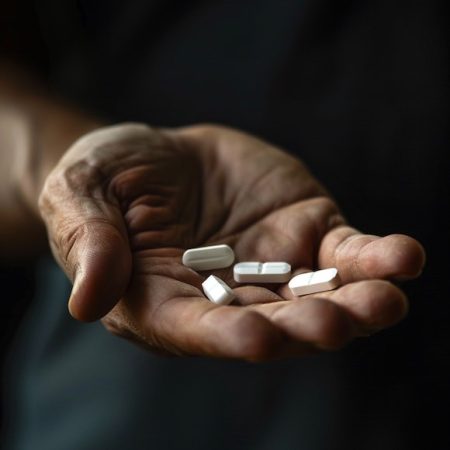Benzodiazepine Addiction Treatment Florida
Benzodiazepine addiction and recovering from it is a journey many cannot face alone. Research reveals that nearly four in ten individuals who use benzodiazepines for more than six weeks develop an addiction, often struggling with intense withdrawal symptoms when attempting to quit. Overcoming this dependency requires more than willpower—it calls for a structured detox process in a safe and supportive environment. Still Detox offers the guidance and care needed to navigate recovery, far removed from the triggers that make sobriety difficult.
The Growing Challenge of Benzodiazepine Addiction
Statistics show just how widespread this issue has become. According to the National Institute on Drug Abuse (NIDA), nearly 14% of opioid overdose deaths in 2021 also involved benzodiazepines (NIDA). It’s a stark reminder of how dangerous these medications can be when misused or taken for extended periods.
Did You Know?
- Nearly 12.5% of U.S. adults report using benzodiazepines at some point in their lives.
- More than 5.2 million people misuse benzodiazepines annually (SAMHSA).
- Prolonged use can lead to dependency in as little as four weeks, even when taken as prescribed.
Despite these numbers, many feel isolated in their struggle, fearing judgment or misunderstanding. If you feel this way, it’s essential to know that you’re not alone—and help is available.
“Benzodiazepines are effective in the short term but highly addictive, often leading to physical and emotional dependency when misused,” said Dr. Emily Carter, an addiction specialist at Yale University. Understanding their effects and the best approaches to treatment is key to regaining control over your life.
What Are Benzodiazepines?
Benzodiazepines act on the brain’s central nervous system, enhancing the calming effects of gamma-aminobutyric acid (GABA), a neurotransmitter that reduces brain activity. This mechanism makes them effective for managing anxiety, panic attacks, and seizures. However, the very effect that soothes the mind also increases the risk of addiction.
Dr. Karen White, a neurologist at Stanford, noted, “Benzodiazepines essentially rewire the brain’s reward pathways, which is why prolonged use can lead to dependency and withdrawal symptoms” (NIDA).
These medications are classified as Schedule IV drugs under the Controlled Substances Act, signaling their risk of abuse despite their medical value. Alarmingly, nearly 14% of opioid-related overdose deaths in 2021 also involved benzodiazepines (Source).
Types of Benzodiazepines and Their Effects
Benzodiazepines come in various formulations tailored to different needs. Here’s a breakdown:
Short-Acting Benzodiazepines
- Etizolam (ProSom®)
- Triazolam (Halcion®)
- Midazolam (Versed®)
Long-Acting Benzodiazepines
Signs of Benzodiazepine Addiction
Recognizing benzodiazepine addiction early is crucial for effective treatment. Common warning signs include:
Physical Symptoms
- Drowsiness and impaired coordination
- Slurred speech
- Memory problems
Emotional Symptoms
- Depression and mood swings
- Cravings for the drug
Benzodiazepine Withdrawal Process
Withdrawal symptoms often mimic the conditions benzodiazepines were prescribed to treat, making quitting even more challenging.
Benzodiazepine Withdrawal Timeline
Days 1–3: Rebound anxiety and insomnia are common.
Days 4–7: Symptoms like nausea, tremors, and irritability peak.
Weeks 2–4: Lingering cravings and emotional symptoms dominate.
“Benzodiazepine withdrawal isn’t just uncomfortable—it can be life-threatening, especially if seizures occur,” said Dr. Andrew Kolodny, an opioid policy expert (PubMed).
Benzodiazepine Addiction Treatment Options
Recovering from benzodiazepine addiction requires a structured, multifaceted approach:
1. Medically Supervised Detox
Medical detox is essential to manage severe symptoms safely. Tapering schedules are often used to gradually reduce the dosage, minimizing withdrawal risks.
2. Medication-Assisted Treatment (MAT)
Medications like buspirone and flumazenil are sometimes used to ease withdrawal symptoms and stabilize the brain’s GABA receptors.
3. Behavioral Therapies
Therapies like Cognitive Behavioral Therapy (CBT) are invaluable in addressing the root causes of addiction and equipping patients with coping strategies for long-term recovery.
4. Comprehensive Care
Support groups, counseling, and lifestyle adjustments complete the recovery process, ensuring emotional and physical healing.
Getting Help
Benzodiazepine addiction is challenging but treatable. At Still Detox, we provide tailored care to help individuals navigate withdrawal and build a healthier, drug-free future. Call us at (561) 556-2677 for expert support.








